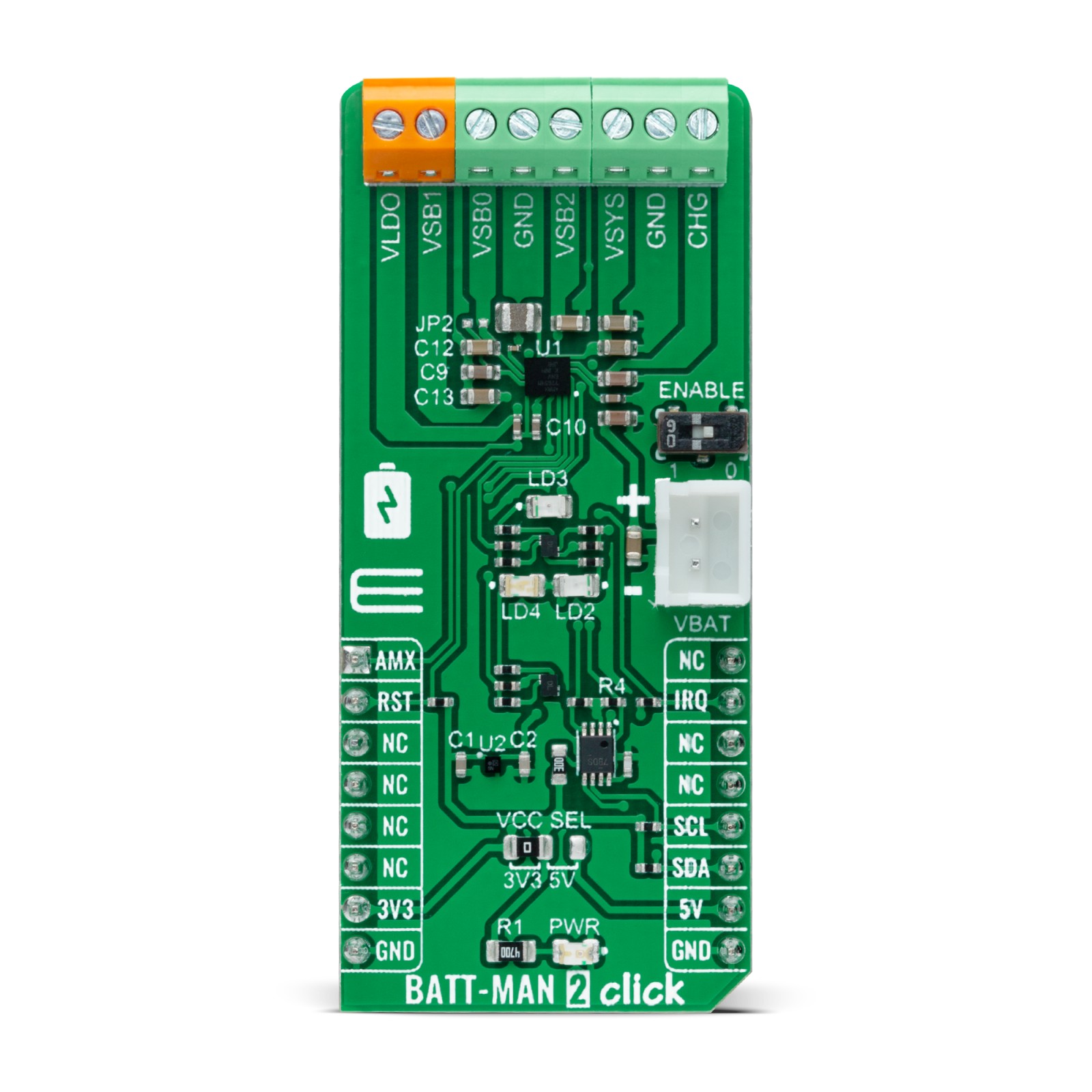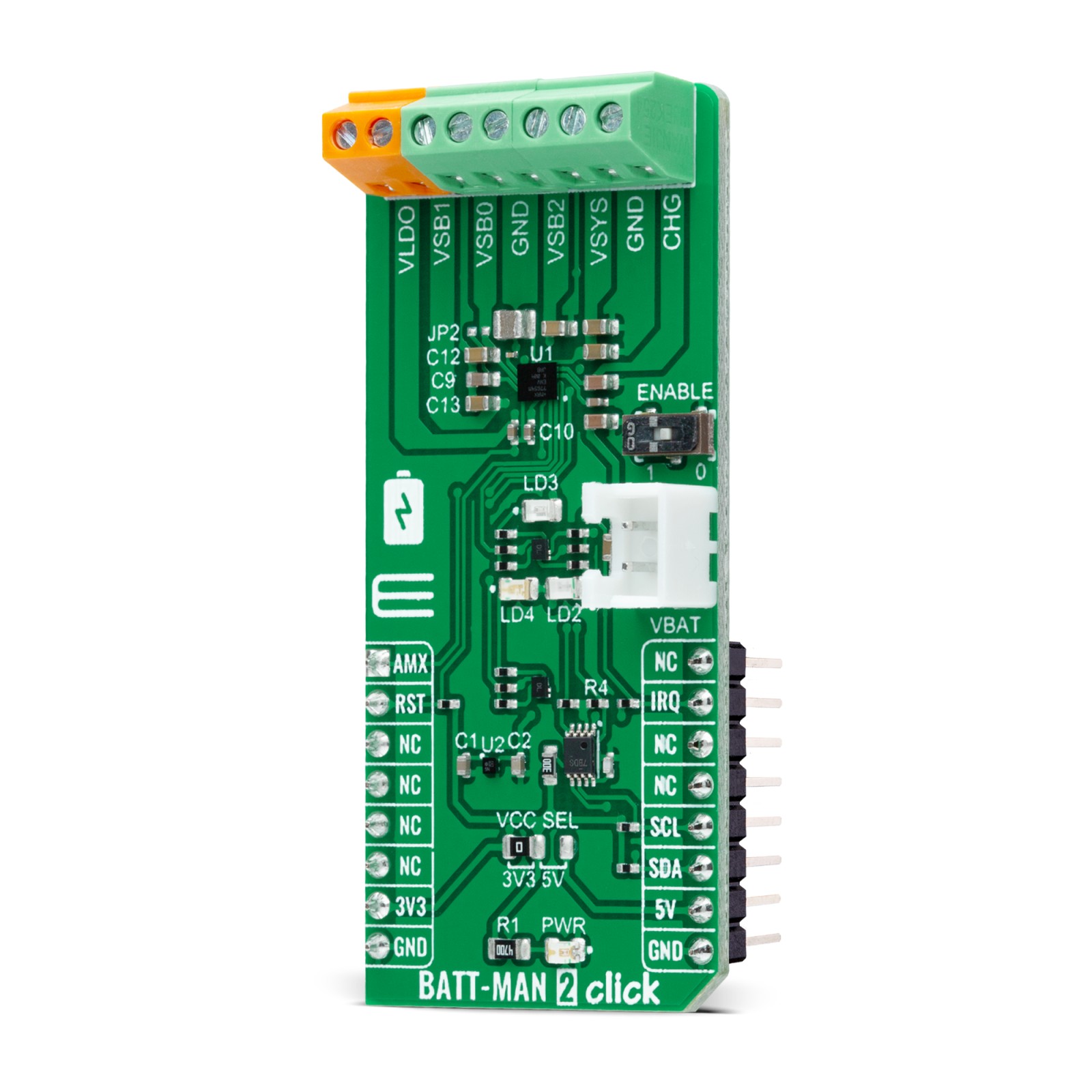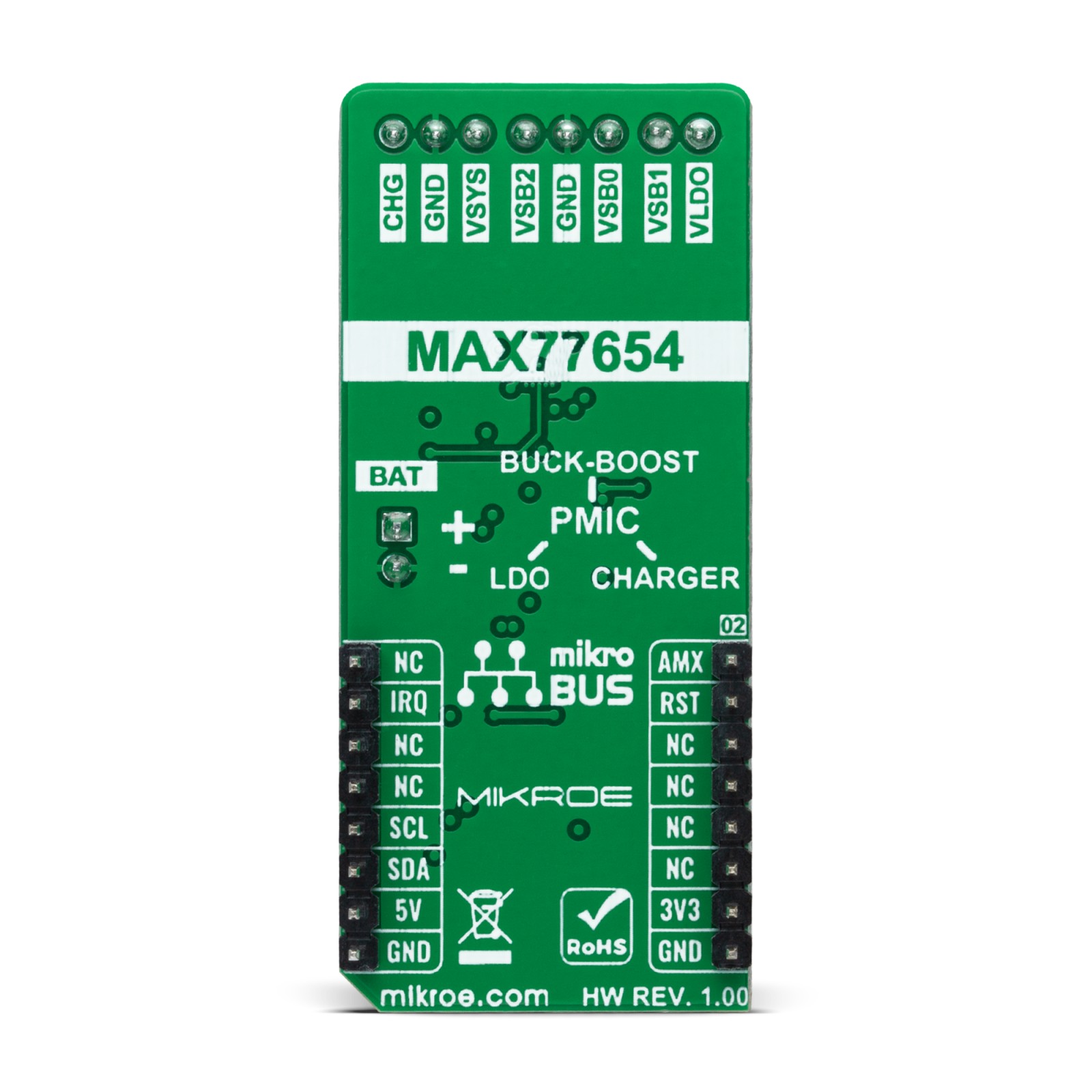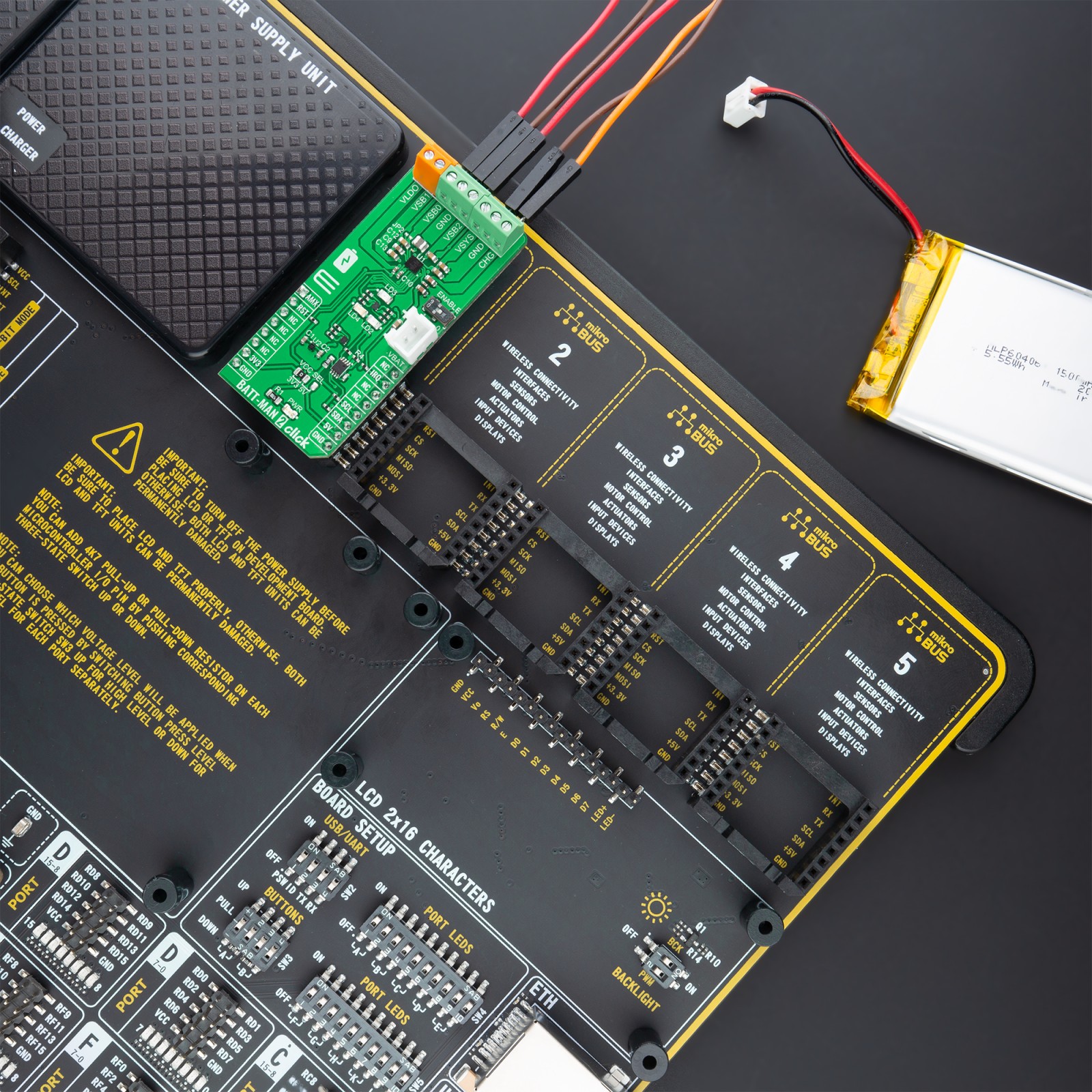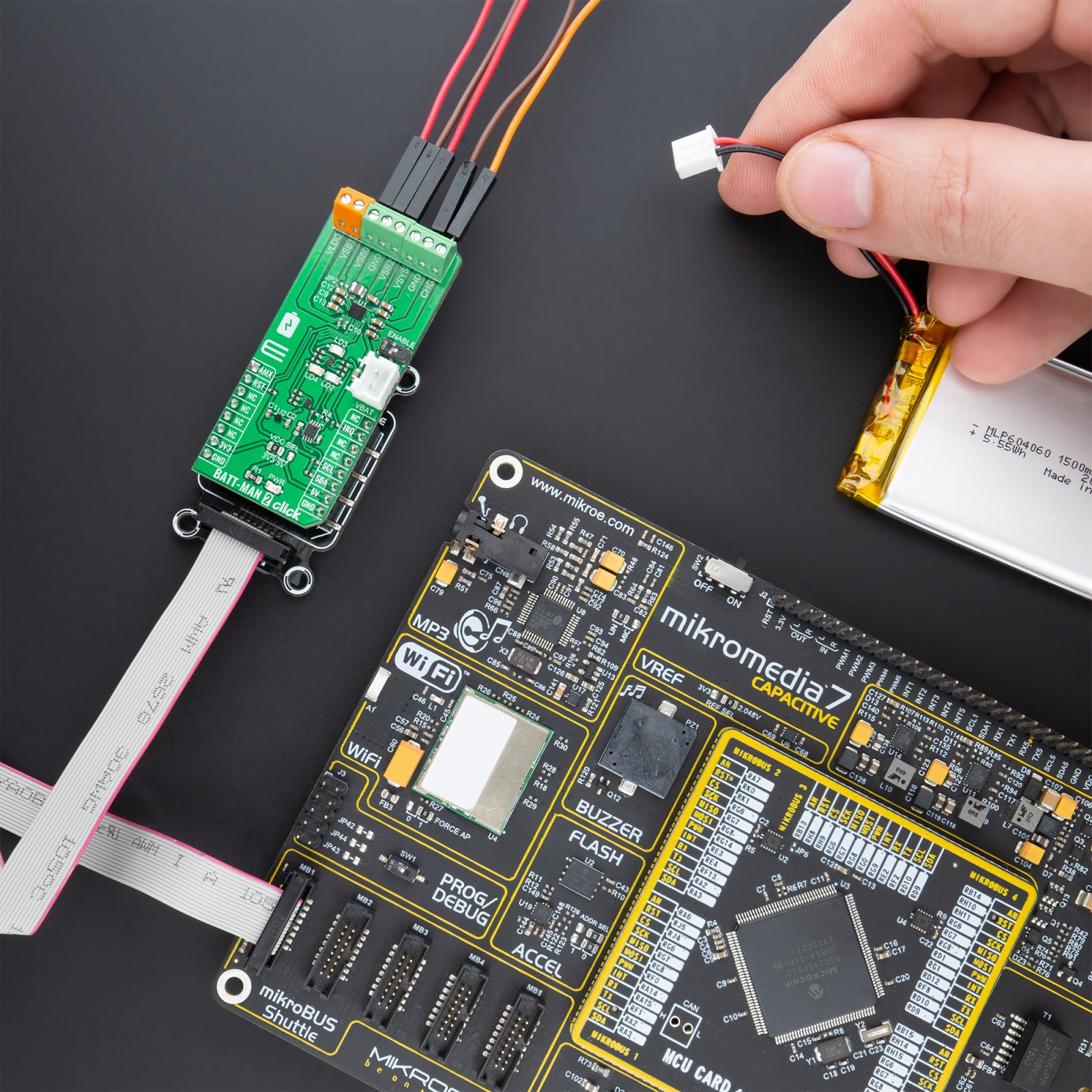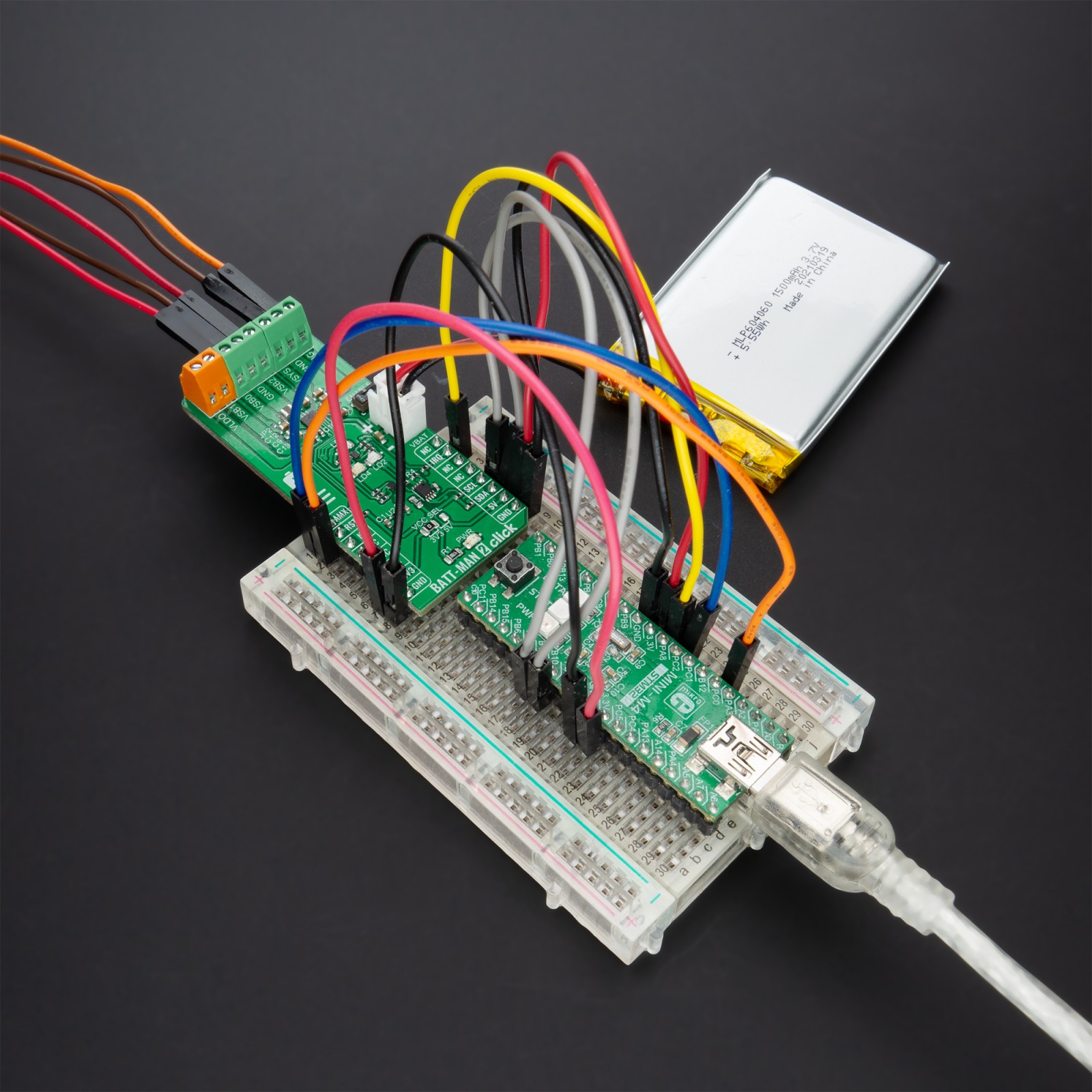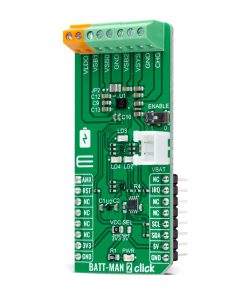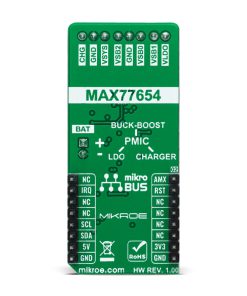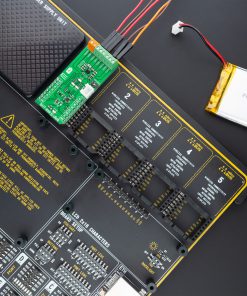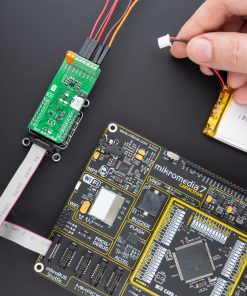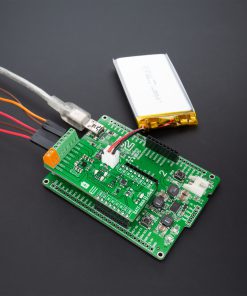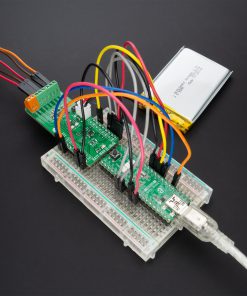BATT-MAN 2 Click is a compact add-on board representing an advanced battery and power management solution. This board features the MAX77654, a single inductor, multiple-output (SIMO) power management IC (PMIC) from Analog Devices. This I2C programmable board features a buck-boost regulator that provides three independently programmable power rails from a single inductor. Also, it has one 100mA LDO output with ripple rejection for audio and other noise-sensitive applications and a highly-configurable linear charger that supports a wide range of Li+ battery capacities featuring battery temperature monitoring for additional safety (JEITA). This Click board™ is suitable as a battery charging and power supply solution for low-power applications where size and efficiency are critical.
BATT-MAN 2 Click is supported by a mikroSDK compliant library, which includes functions that simplify software development. This Click board™ comes as a fully tested product, ready to be used on a system equipped with the mikroBUS™ socket.
 RS485 Click 5V
1 × R235.00
RS485 Click 5V
1 × R235.00  3D Motion Click
2 × R1,050.00
3D Motion Click
2 × R1,050.00 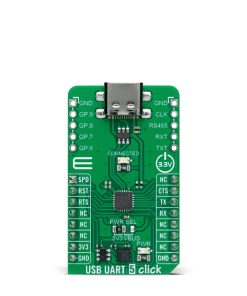 USB UART 5 Click
1 × R410.00
USB UART 5 Click
1 × R410.00  HYDROGEN Click
1 × R335.00
HYDROGEN Click
1 × R335.00  BEE Click
2 × R800.00
BEE Click
2 × R800.00  BUZZ Click
1 × R115.00
BUZZ Click
1 × R115.00 
